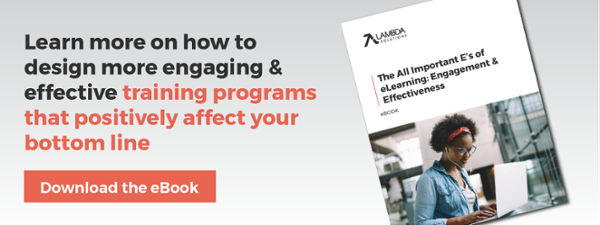Organizations around the world continue to postpone and cancel in-person meetings in response to the COVID-19 pandemic. Training organizations, such as associations and schools that offer instructor-led-training (ILT) have emerged as one of the earliest and hardest-hit. Organizations can’t afford to put capability building on hold and push the pause button on critical learning, even as they move rapidly to put employee safety first.
To continue enabling and delivering value-creating efforts, associations have a number of tactical steps they can consider to protect employees and members, adapt programs and delivery, and establish and expand virtual live learning. Digital and virtual learning programs were already on the rise before COVID-19 struck, and we already see a marked increase in such learning programs. Beyond tactical steps, associations can take strategic measures, such as exploring alternative digital learning strategies, that they can develop during this time of social distancing. The stronger learning capabilities that emerge from this crisis could stand as a positive long-term outcome.
Working towards a safer way to interact with learners during this global crisis has led to an increased use of at-home learning tools and environments. Associations are now working towards establishing a blended learning approach to better engage with learners in their respective fields worldwide.
Does Online Learning Deliver the Same Value as In-Class Instruction?
One of the ongoing commitments that associations make to its members is that of delivering value. Since the pandemic they have been faced with the challenge of fulfilling that commitment especially as they undergo a rapid process of digital transformation of their training programs. No doubt you’ve heard something like this every time an online shift is mentioned:
“You just don’t get the same value from online learning and events as you do from in-person instruction.”
But is that actually true, and if not, why do so many people believe it to be? Despite the preconceptions, research over many decades has shown that the outcomes for those studying online do not differ from those in a classroom. In fact, there has been such consistency of finding in this regard that the phrase “no significant difference” has become the expected hypothesis in making comparisons. Let us look at the fundamental differences between Face-to-Face instruction and eLearning.
|
|
Face-to-Face (F2F) or Instructor Led Training (ILT) |
Online Learning or eLearning |
|
|
|
You can see the potential benefits that the online environment provides in terms of flexibility, accessibility, and engagement, but all of that doesn’t change the fact that many people simply don’t believe online events are as effective as the in-person variety.
Nonetheless, halfway through 2020 almost 90% of Associations in the USA were offering some kind of online education to their members.
The “negative” perception of online events and remote training certainly isn’t universal, and we will soon examine why it may not be that online offerings are inherently less effective, but how they are being delivered on is.
What Is Blended Learning?
Blended learning is an approach that combines traditional teaching methods, such as in a classroom setting, with eLearning technology, such as online modules, video lectures, presentations, discussion forums, quizzes, games and more. The idea is to use technology collaboratively with synchronous or real-time trainer-learner modes of engagement. Learning comes from both the instructor or facilitator and the online learning modules and activities.
Blended learning's adoption has grown throughout training and certifications around the world and has become the new normal in the training-learning process. It optimizes the use of ILT with an online environment.
Digital technologies have been adopted, creating media-rich digital learning platforms personalized with adaptive courses and web conferencing tools that connect learners and trainers.
Engagement is key, which is where blended learning comes in. In The All-Important E's of eLearning: Engagement and Effectiveness, it states that when employees are engaged with their work and goals, they outperform their fellow employees by 147%. This engagement is where blended learning shines.
Moving towards an impactful Learning Management System allows for more personalization for individual learners, resulting in increased efficiency in the workplace and other educational endeavours.
This ability to personalize the content helps identify struggling learners and lets the trainer intercede before the member is too far off-track.
Blended learning creates more meaningful learning experiences and motivates learners to use critical thinking skills. It also promotes retention and increases their commitment to their professional goals.
It even improves workplace productivity. There are many benefits to a blended learning environment if done with the right support, technology, and educational objectives.
What Are the Benefits of Blended Learning?
- Learner engagement is increased
- Increased flexibility and personalization in creating course modules
- Increased one-on-one learner interactions
- Learner characteristics and learning experiences are taken into account to promote engagement that leads to desired outcomes
- Focuses on the potential of each modality to create better and meaningful learning through effective practices
- Allows online tracking, which can help target 'at risk' learners quickly
- Can create interactive simulations
- Uses visual, auditory and interactive content
- Reduces time strain allowing learners to learn at a good pace
- Increases preparedness and knowledge
- Increases quality of training
- Allows for better reporting and analytics
- Tracks and improves engagement
- Overcomes geographical constraints
What Is the Downside to Blended Learning?
- Some technologies can be challenging instead of being useful
- It can require a trainer that needs to be highly skilled in eLearning
- Total training time is about the same between both flipped and blended classrooms
- Trainers may overdo it with educational activities and content causing a cognitive overload
- It has been found that in assignments, the credibility of sources decreased, and plagiarism increased
- Can require a significant investment in technology, like hardware and software
Best Practices for Blended Learning
To create your online learning platform for your association it is best to determine your primary goals and learning objectives. You can then create a comprehensive and cohesive learning strategy by picking the best features for your learning structures.
Your choices should work together seamlessly to best train your prospective learners. You should also enable communication for the learners through creating forums and instant messaging platforms. Also, a successful trainer is needed to bring blended learning together.
You also need to know your audience. This knowledge allows you to determine your primary objectives.
Figure out what your learner's abilities are and when or where the learning will take place. Identify which skill sets and information are required and what your audience's limitations are. This way, you can create custom learning plans that will stick with those you are trying to educate.
Blended Learning and Its Effectiveness
A study on the effectiveness of using blended learning strategies for teaching and learning human anatomy showed that those who participated in a blended learning course had a higher pass rate of 87.9% versus the 71.4% pass rate for a traditional classroom.
This improved students' success by a whole letter grade, demonstrating the strength of blended learning.
The case study Blended Learning in Healthcare: A Toolkit for a Blended Learning Approach in Clinical Training discusses the active learning model that blended learning creates. Here, the teaching responsibility shifts from the teacher to the student, which engages and empowers the learner, creating an overall better learning experience.
Connecting what is learned in the courses to the professional atmosphere is an essential step because retention of what a learner grasps in a classroom or online is not guaranteed.
By creating real-life situations to test and measure learner success, you can better grasp where things are slipping through the cracks, thus creating a better learning environment for future learners.
What Case Studies Say:
In the case study, Canadian Avalanche Association Increases Quality of Training by Using Blended Learning; you will discover how blended learning has greatly affected Canadian Avalanche professionals' learning outcomes.
 They created a course using a Learning Management System (LMS) and saw a noticeable increase in their learners' performance, allowing them to perform better in-field. They also saw a reduction in costs, as they no longer needed to host as many in-person classes.
They created a course using a Learning Management System (LMS) and saw a noticeable increase in their learners' performance, allowing them to perform better in-field. They also saw a reduction in costs, as they no longer needed to host as many in-person classes.
These are just a few benefits that make blended learning the best choice for many organizations and businesses.
How to Reach Your Association's Objectives and Stay Compliant With Blended Learning
To increase the effectiveness of your blended learning strategies, you first need to make sure your courses align with your associations objectives or goals.
The eBook Compliance and Competency Training Made Easy With LMS outlines seven steps to achieve a solid framework for educating core competencies in your learners in far more depth than we will cover here.
Step 1:
Define your purpose by asking a few questions, such as:
- Why are you training your members?
- Is it for compliance, skills training, new regulations, best practices?
Step 2:
Once you uncover what your purpose is, you should then observe your trainees in action. For example, you can investigate what they are doing daily, how they are performing, and what they could be doing better.
Step 3:
Engage and involve your members. Try to understand how your trainees feel about their positions.
Step 4:
Determine if their needs are being met and what they think should be changed about their roles. This engagement is a vital step in achieving top-performing results.
Step 5:
Set your goals by figuring out what you want to accomplish and writing them down. Define your membership by creating hierarchies, establishing competencies and developing essential skills and areas of training needed.
Step 6:
It is also vital that you provide the coaching and training which will best help your association. You need to determine what type of coaching is required and your trainer's ideal skills and attributes.
Step 7:
Finally, you link your research to align with your association's objectives. Outline what your association's goals are and how training can be linked back to them. You will need tools that help your association perform and demonstrates the return on investment.
Ask your memberships leaders as to how they would define learner success. This will determine how the course should be evaluated for ROI, such as training costs, engagement rates, and working capital.
Studies have found that professional support that focuses on the instructor's beliefs and ideations provided more success in creating a blended learning structure. This support is where an excellent LMS with personalized support for your association and trainers comes in.
Now that you know a bit about the instructional strategies involved with creating an effective course, you can begin building your blended learning initiative.
For more advice, best-practices, and how-to guides to creating, implementing, and improving your Blended Learning, eLearning, and Remote Training courses, we have all of these additional free resources:
- eBook: Big Data for HR: How Predictive Analytics Can Deliver Business Value
- Case Study: Reduce Admin Time and Provide More Effective and In-demand Resources to HR Professionals
- Article: 7 Easy Steps for Business Succession Planning Success
- Webinar: Why You Should Be Running Your L&D Team Like A Startup





